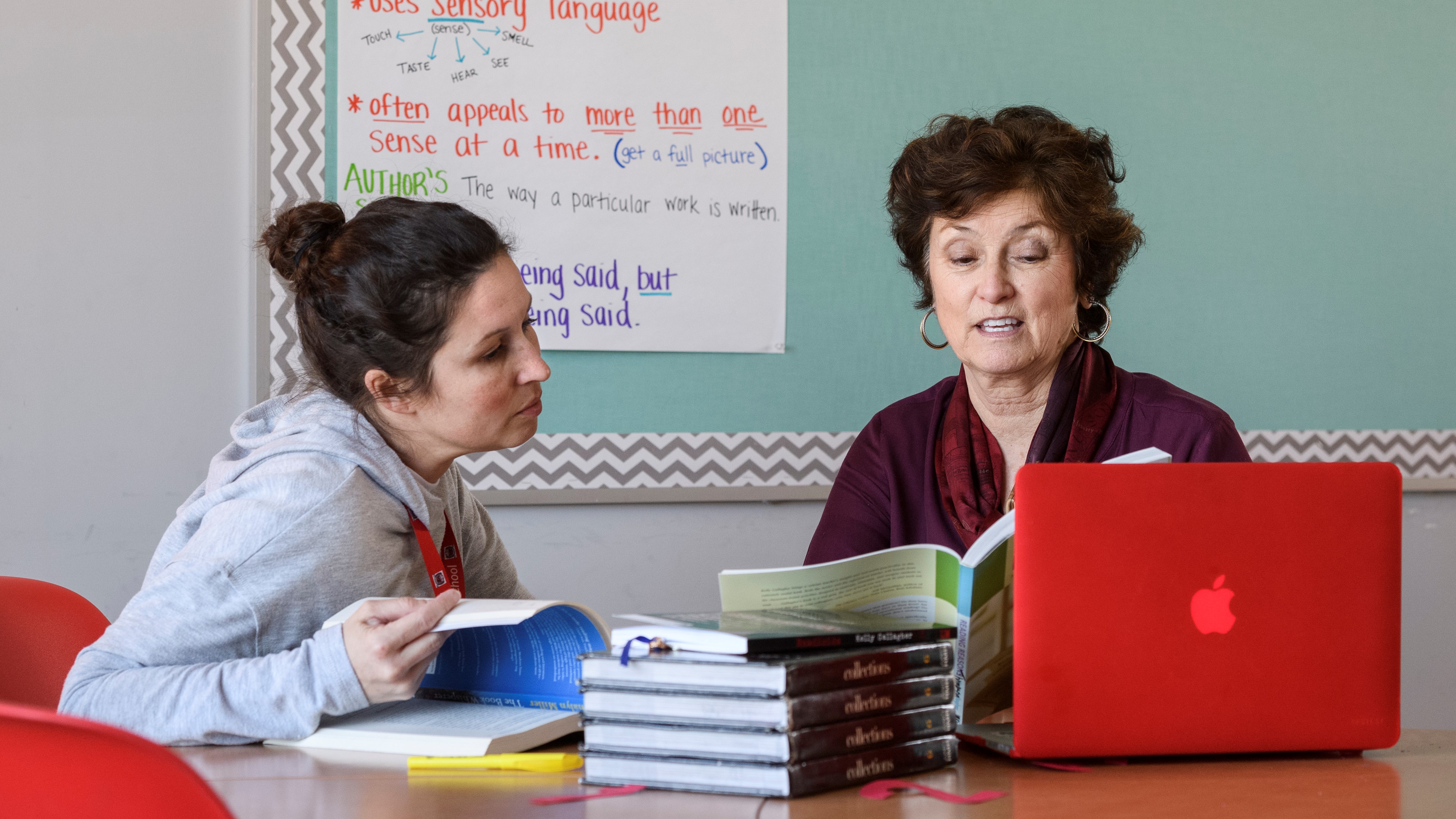School of Education
Building Research-Practice Partnerships

Desimone and colleagues offer practical guide for education partnerships
Collaborative partnerships between practitioners in school districts and researchers in universities have the potential to address real-world issues in education by bridging the divide between research and practice. But, how do we build and maintain a partnership that actually produces usable knowledge for a school or district?
Laura Desimone, University of Delaware College of Education and Human Development director of research, and her colleagues offer a roadmap with concrete activities for planning, building, implementing, and monitoring a partnership in their AERA Open article, “Research-Practice: A Practical Conceptual Framework.”
“One of the key challenges to partnership building is the recognition and enactment of the idea that both researchers and practitioners can benefit from and build their capacity from partnership work,” said Desimone. “This understanding goes against the traditional notions of researchers providing design, measurement and analysis expertise, and practitioners providing context and access.”
In building Shared Solutions, a partnership between the Graduate School of Education at the University of Pennsylvania (Penn GSE) and the School District of Philadelphia (SDP), Desimone and her colleagues turned to the policy attributes theory. This theory suggests that policies with high levels of specificity, authority, consistency, power, and stability are most likely to gain influence and endure over time.
With specific examples of activities, Desimone and her colleagues illustrate how they applied these five attributes to Shared Solutions, a partnership designed to formalize the many research collaborations between Penn GSE and SDP.
Specificity: Setting clear goals and activities
One of the first steps in operationalizing their shared vision for more coordinated research efforts was to translate their shared vision into a set of explicit goals and activities.
Desimone and colleagues achieved this specificity by writing a detailed research plan on the district’s turnaround schools, defining the scope of work, and establishing cross-institution working groups, meetings, and mini-conferences that facilitated communication between principals, teachers, and researchers.
Authority: Gaining the support of leadership and practitioners
Recognizing the importance of support at the highest levels, Shared Solutions cultivated the support of former and current deans of Penn GSE as well as the superintendent of SDF. These leaders contributed to the success of the partnership by acknowledging the work of their faculty and staff, connecting the partnership with other internal and external resources, and allowing the partnership directors to prioritize the work.
However, Shared Solutions also learned that affirming practitioner authority was equally as important: principals and teachers are typically enthusiastic about data collection if they have a say in what type of information is collected and if they believe the findings would be useful to them.
To cultivate practitioner authority, Desimone and her team held a series of focus groups with teachers and principals, which allowed them to participate in the development of the research foci and instruments. For example, principals added the task of finding substitute teachers on short notice to the partnership’s list of common challenges facing school leaders.
Consistency: Aligning goals and coordinating efforts
Shared Solutions also worked to bring consistency to the partnership, aligning the work with each partner’s goals and bringing coherence to each organization’s efforts.
It was especially important to the district, for example, to ensure that any research conducted in their schools addressed the school’s priorities and led to actionable results without overburdening the school or overlapping with other projects.
To address this goal, Shared Solutions proposed a research project data archive. Researchers interested in working with SDP could use the database to show how their proposals for new research complemented existing projects.
Power: Developing rewards and incentives
Shared Solutions developed incentives to build the partnership as well as rewards for university faculty, district administrators, principals, teachers, parents, and the broader community.
A major incentive for the building the partnership was external funding, made possible through a grant from the Institute for Education Sciences. However, the partnership also developed specific rewards for each group of people working on the project.
For example, Shared Solutions encouraged the participation of principals and teachers by communicating the partnership’s findings in accessible and useful ways. Summaries of survey results, for example, directly addressed questions like “What are my school’s strengths and weaknesses?” and “How can we improve?”
Stability: Institutionalizing the partnership
Since research-practice partnerships can often be fragile, Desimone and her team worked to stabilize Shared Solutions by institutionalizing the partnership at Penn GSE and SDP.
In addition to acknowledging partnership duties on each partner’s organizational charts and reserving physical space for staff, Desimone and her team recommended other ways of establishing stability, such as creating student internship programs and integrating partnership work into coursework at Penn GSE.
“The policy attributes framework provides a useful guide for developing partnerships with the potential to last, and offers guideposts for continued monitoring and development,” said Desimone.
For more about this conceptual framework and Shared Solutions, read “Research-Practice: A Practical Conceptual Framework.”
Article by Jessica Henderson.
Photo courtesy of the College of Education and Human Development.



